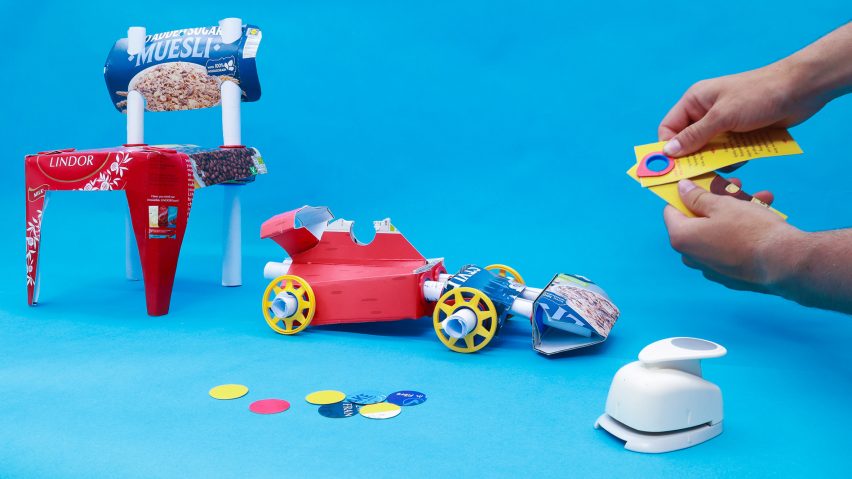
University of Brighton presents ten design student projects
Dezeen School Shows: a project that uses sunlight to prompt individuals to reflect the dynamics of a toxic relationship is included in Dezeen's latest school show by students at University of Brighton.
Also featured is a gadget that transforms old plastic bottles into filament, which can be used as a sustainable solution for the future of 3D-printing technology.
University of Brighton
Institution: University of Brighton
School: School of Architecture, Technology & Engineering
Courses: BA (Hons) Architecture, BA (Hons) Interior Architecture, MArch Architecture and BSc (Hons) Product Design
Tutors: Luis Diaz (BA Arch), Jeff Turko (MArch) and James Tooze (Product Design)
School statement:
"The School of Architecture, Technology and Engineering at Brighton offers courses in Architecture, Interior Architecture and Product Design at the undergraduate level, together with a suite of courses at MA and PhD level.
"Postgraduate courses include Architecture (MA and RIBA Part II), Architecture and Urban Design, Sustainable Design, Interior Design as well as Practice and Law in Architecture.
"The BA (Hons) Architecture course has a strong focus on sustainability and social issues. Projects are focused in Brighton and the local southeast region, exploring contemporary global issues.
"The BA (Hons) Interior Architecture course is a well-established, hands-on course that focuses on the design of interior spaces within existing buildings and design that links human activities and events to specific places and spaces.
"The Product Design BSc (Hons) champions project-based learning, integrating practical experience and theoretical knowledge to help students learn to navigate every stage of the product development process, to design sustainable, socially-conscious, commercially-viable and technically-sound solutions."
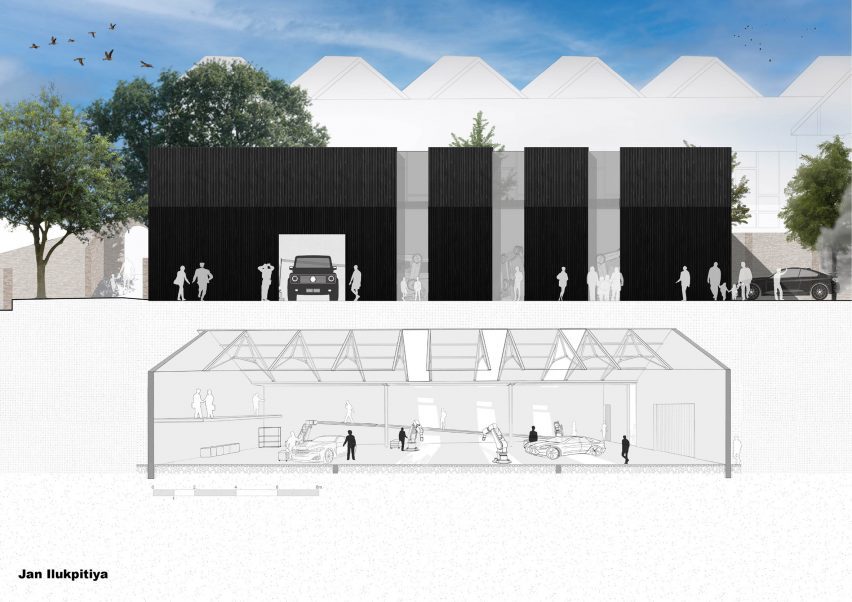
Clean Swap by Jan Ilukpitiya
"Clean Swap addresses the future of converting combustion engine vehicles into electric vehicles by reusing the existing chassis and introducing robotics into the conversion process.
"The project provokes debate and awareness around the issues that surround pushing for an all-electric future without the renewable infrastructure to support it.
"The principles of a circular economy were applied in the approach to the site's existing materials, upcycling and repurposing the timber, tiles, insulation and plaster.
"Embodied carbon and cradle-to-gate assessments were used to calculate and compare emissions of the existing materials on the site and the production of new materials.
"This influenced the use of charred wood from trees that are infected with ash dieback disease – many of these trees are cut down due to the infection and typically wasted. It is used as cladding and insulation in my project as it has high thermal mass."
Student: Jan Ilukpitiya
Course: BA (Hons) Interior Architecture
Tutor: Judit Pusztaszeri
Email: j.ilukpitiya1[at]uni.brighton.ac.uk

Cathedral to Wine by Millie Woodford-Grogan
"Cathedral to Wine is a wine bar situated in a small rural village.
"The different facilities include a wine bar to serve the local vineyard, a wine making area, a training centre for sommeliers, Airbnb, outdoor terrace spaces, service areas, and a variety of seating.
"Unique seating areas, a bar and the wine making area can be found on the second floor.
"The building is constructed using long vertical curving CLT panels that interlock around a skylight. The eyes are naturally drawn upwards through the vertical spaces – a feature commonly found in cathedrals.
"This bar is intended to create a sense of relaxation and retreat – a magical experience in a unique structure."
Student: Millie Woodford-Grogan
Course: BA (Hons) Architecture
Tutor: Samantha Lynch
Email: e.woodford-grogan1[at]uni.brighton.ac.uk
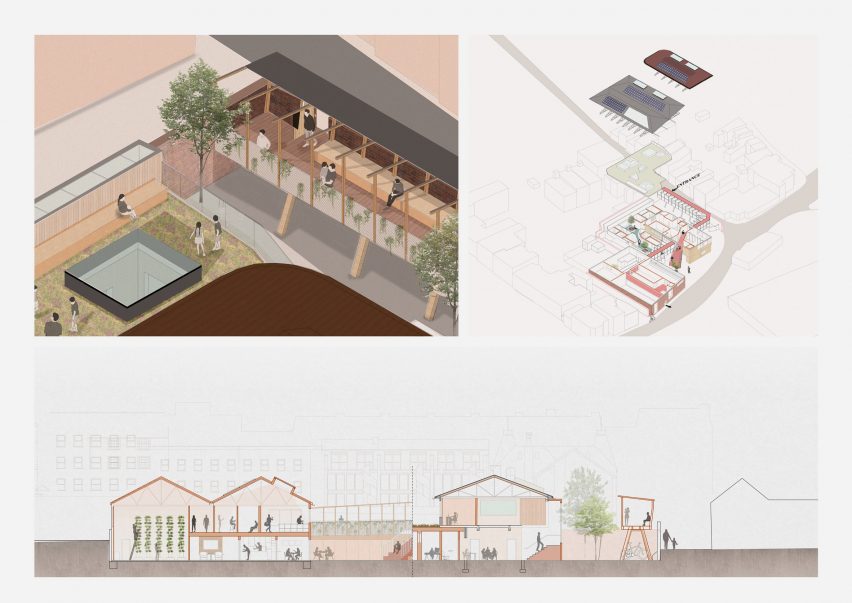
Urban Oasis by Zenida Fernandes
"This project was influenced by the routes around Lewes, England, serving as a driving force in its conception. It utilises the 'town within a town' concept to create the Urban Oasis.
"This project encompasses three key ingredients: primary and secondary routes that facilitate movement, plots generated by routes to accommodate consulting rooms and social squares that serve as waiting rooms.
"The main consulting rooms are designed to resemble a house, prioritising visitor comfort. A primary objective for this project was retrofitting two existing buildings.
"I achieved this by retaining the majority of both buildings' structures, enhancing their performance by adding insulation to the interior skin. Any additional construction was carried out using prefabricated CLT panels to minimise material waste."
Student: Zenida Fernandes
Tutors: Glenn Longden-Thurgood and David Chambers
Email: z.fernandes1[at]uni.brighton.ac.uk
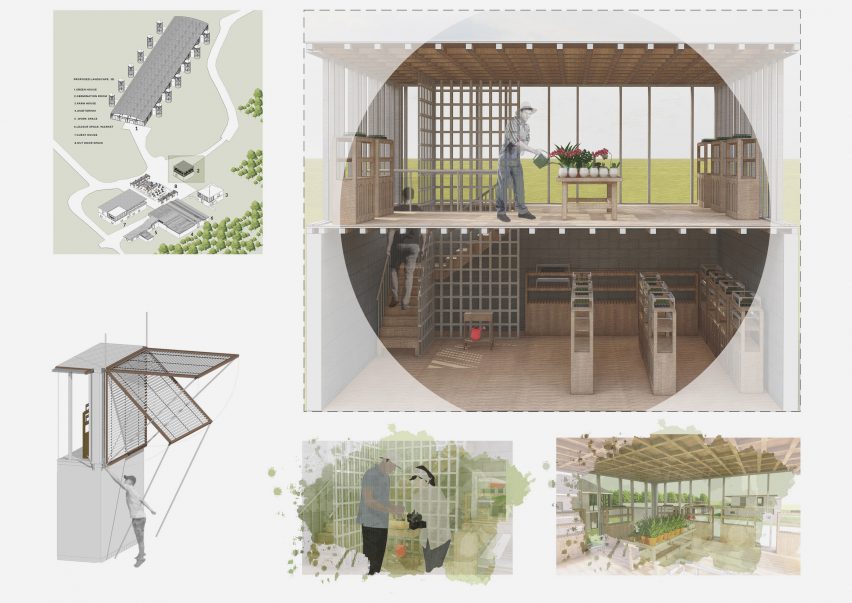
Harvesting Connections by Paul-Antonius Kirollos
"The project in Berwick, East Sussex, England, aims to create a cohesive network of farms by developing a central research centre and farm facility.
"This facility will serve as a hub, promoting connectivity and knowledge exchange among farmers. It will foster collaboration and drive innovation in sustainable farming techniques.
"The project repurposes the existing structures of Stonery Farm, including the farmhouse, chicken shed and garage to provide functional spaces for work, leisure and accommodation.
"Additionally, a large greenhouse with a dedicated germination room will be constructed to accommodate a plant nursery.
"These transformations will optimise resource utilisation, create a dynamic environment and foster a sense of community and cooperation within the farming community."
Student: Paul-Antonius Kirollos
Course: MArch Architecture
Tutor: Anuschka Kutz
Email: p.kirollos1[at]uni.brighton.ac.uk
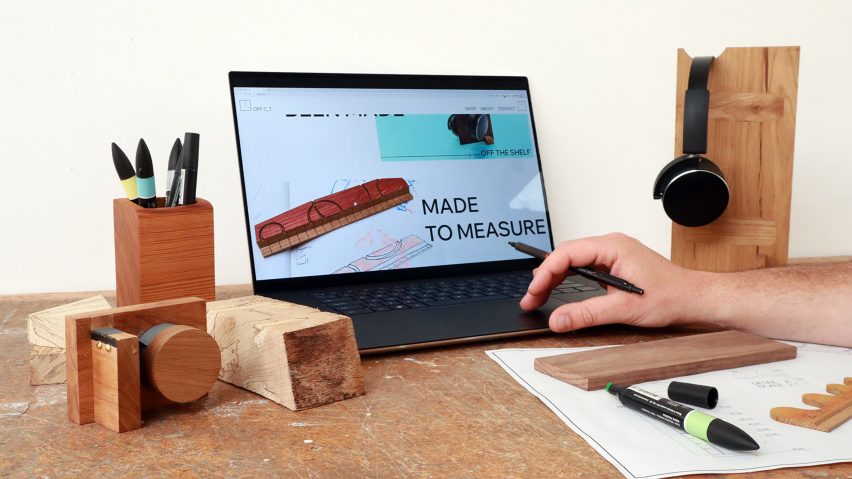
OFFC_T by Christy Cairns
"There is an abundance of high-quality wood offcuts, but working with them requires a lot of additional considerations. Many woodworkers retain their wood offcuts with the ambition to use them, but without knowing how, they get thrown away or burnt.
"OFFC_T provides data-driven categorisation of offcuts and combines it with material-appropriate designs for high-quality products.
"These designs have been closely developed with a community of woodworkers to integrate within their day-to-day work, helping them reduce their waste, make the most of their materials and reach more customers."
Student: Christy Cairns
Course: BSc (Hons) Product Design
Tutor: James Tooze
Email: c.cairns2[at]uni.brighton.ac.uk
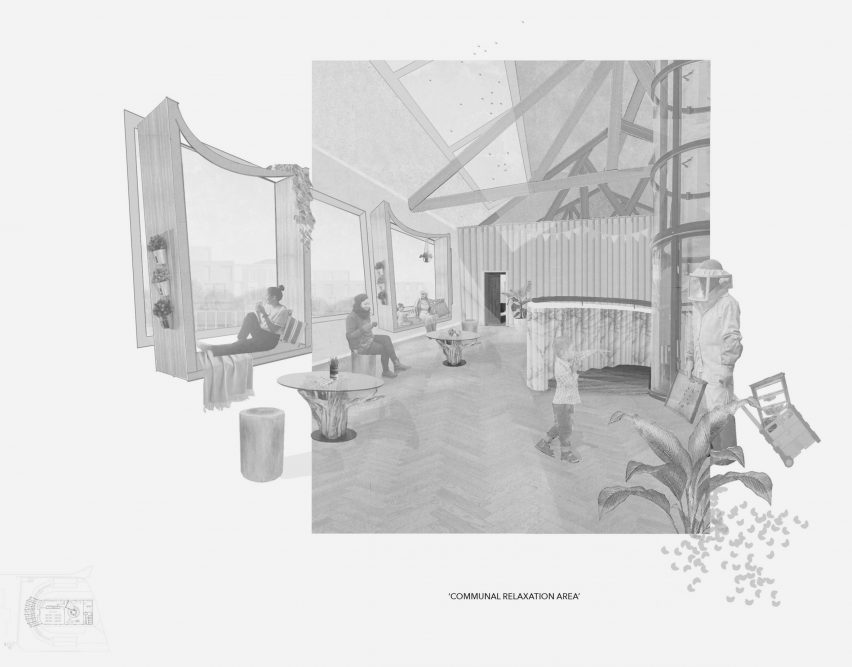
Cultivation Kitchen by Kassidy Edwards
"Cultivation Kitchen represents the harsh realities of food poverty due to the ever-growing cost-of-living crisis that is affecting the UK. The project combines the food donated by residents with fresh produce grown on site.
"The fresh herbs and produce will create the substantial and flavourful meals that regular food banks often struggle to provide for those most in need. This allows hearty and delicious meals to be accessible to everyone.
"The programme will also provide participants and residents with the chance to explore newly designed communal spaces and take part in daily workshops where the importance of flavour and nutrients are discussed."
Student: Kassidy Edwards
Course: BA (Hons) Interior Architecture
Tutor: Sophie Ungerer
Email: k.edwards5[at]uni.brighton.ac.uk
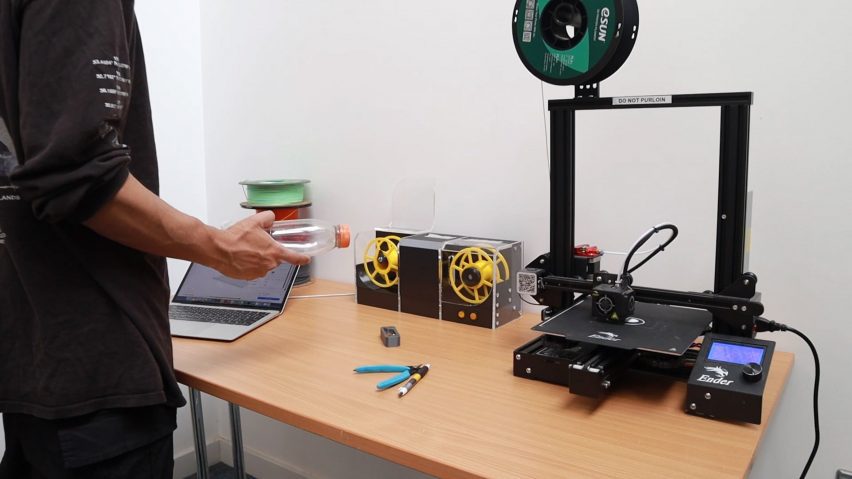
The Formu Pettle by Kyle Withey
"Meet the Formu Pettle, a user-friendly and accessible PET filament extruder that turns plastic bottles into filament for 3D printers that use Fused Deposition Modelling (FDM) technology.
"The device allows 3D-printing hobbyists to give life back to their plastic waste and turn it into something new.
"The device is designed to be easy to use and maintain, with simple instructions and clear visuals to guide the user through the process.
"It aims to be affordable and accessible to a wide range of users, with an emphasis on reducing the environmental impact of 3D printing by using recycled materials."
Student: Kyle Withey
Course: BSc (Hons) Product Design
Tutor: James Tooze
Email: k.withey1[at]uni.brighton.ac.uk
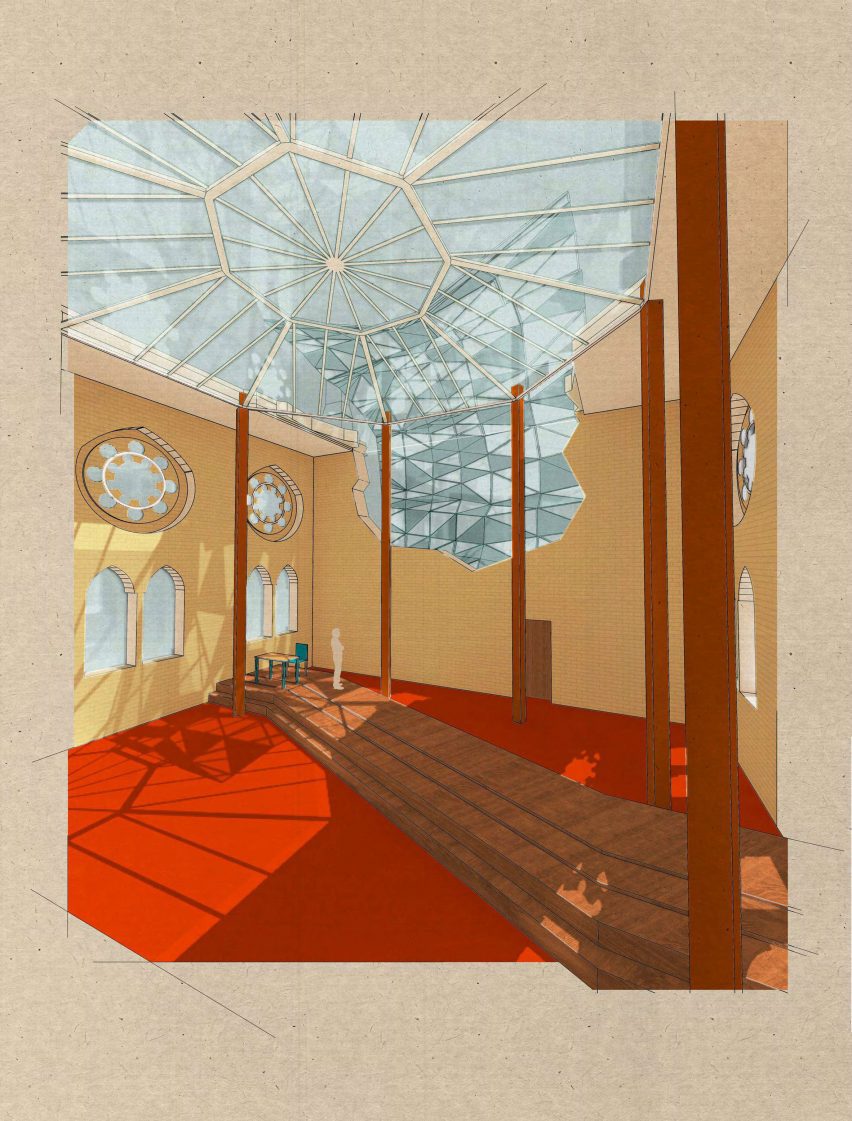
House For Her by Hannah Puttick
"This project was inspired by Spike Jonze's film, Her. I analysed the main characters – Samantha and Theodore's – relationship, which was based on love but defined by a constant power struggle, which led me to create a futuristic and parasitic element in the design of House For Her.
"This element was designed to manipulate the sun's path and dictate the spatial design. Throughout the film, Samantha attempts to gain control over their relationship. This causes Theodore to become distracted, irritated and angry.
"In this design, Samantha is represented by the sun, creating a glare on 'Theodore's computer' and forcing him to constantly move to avoid the light."
Student: Hannah Puttick
Course: BA (Hons) Interior Architecture
Tutor: Rafaella Siagkri
Email: h.puttick2[at]uni.brighton.ac.uk
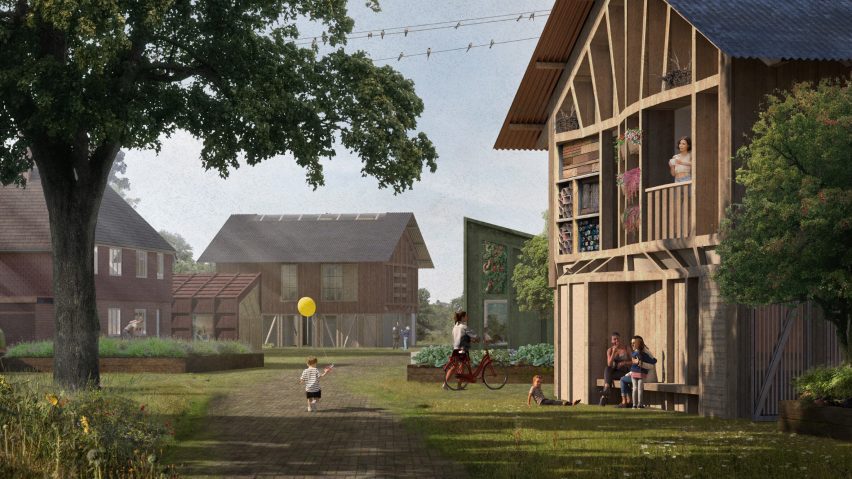
Rural Revolution by Charles Palmer
"The historic impacts of manorialism, privatisation along with the present-day parcelisation and financial incentives for one-size-fits-all house builders are not only eroding our landscape but using resources to develop an individualistic culture detached from the earth we live on.
"What if we stop building on new parcels of land? How can we rethink how we build rural settlements, restore a local identity and replenish the exhausted natural landscape?
"By creating a mechanism for changed ownership structures with a democratic building system, the project aims to re-democratise the rural realm's land use, creating a community and culture of collective care, which is engaged with one another and the landscapes they occupy.
"The increased intensity serves to foster this community, facilitating the development of a local identity, allowing for collective ownership of space and resources to create sustainable rural settlements that can collectively develop their own infrastructure to become self-sustainable and regenerative."
Student: Charles Palmer
Course: MArch Architecture
Tutor: Anuschka Kutz
Email: c.palmer10[at]uni.brighton.ac.uk
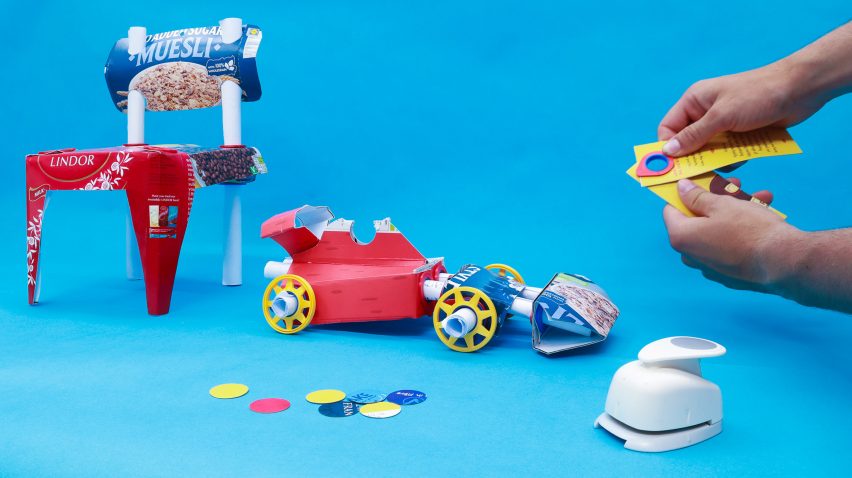
SnapKit! by Max Male
"SnapKit! is an innovative and satisfying toy that enables anyone to create inventions from cereal boxes with a hole punch and 3D-printed connector. If you can hole punch it, you can add it to your inventions!
"This sustainable design solution gives new life to discarded cardboard boxes, promoting creative problem-solving and reducing waste.
"SnapKit! isn't just about recycling, it's about sparking imagination, encouraging problem-solving skills and introducing circular thinking for individuals aged five and up.
"The purpose of this project is to unlock your creative potential. I believe that if more people engage in creative problem-solving, our future will be brighter."
Student: Max Male
Course: Product Design BSc (Hons) with Professional Experience
Tutor: Gareth Owen Lloyd
Email: m.male2[at]uni.brighton.ac.uk
Partnership content
This school show is a partnership between Dezeen and University of Brighton. Find out more about Dezeen partnership content here.